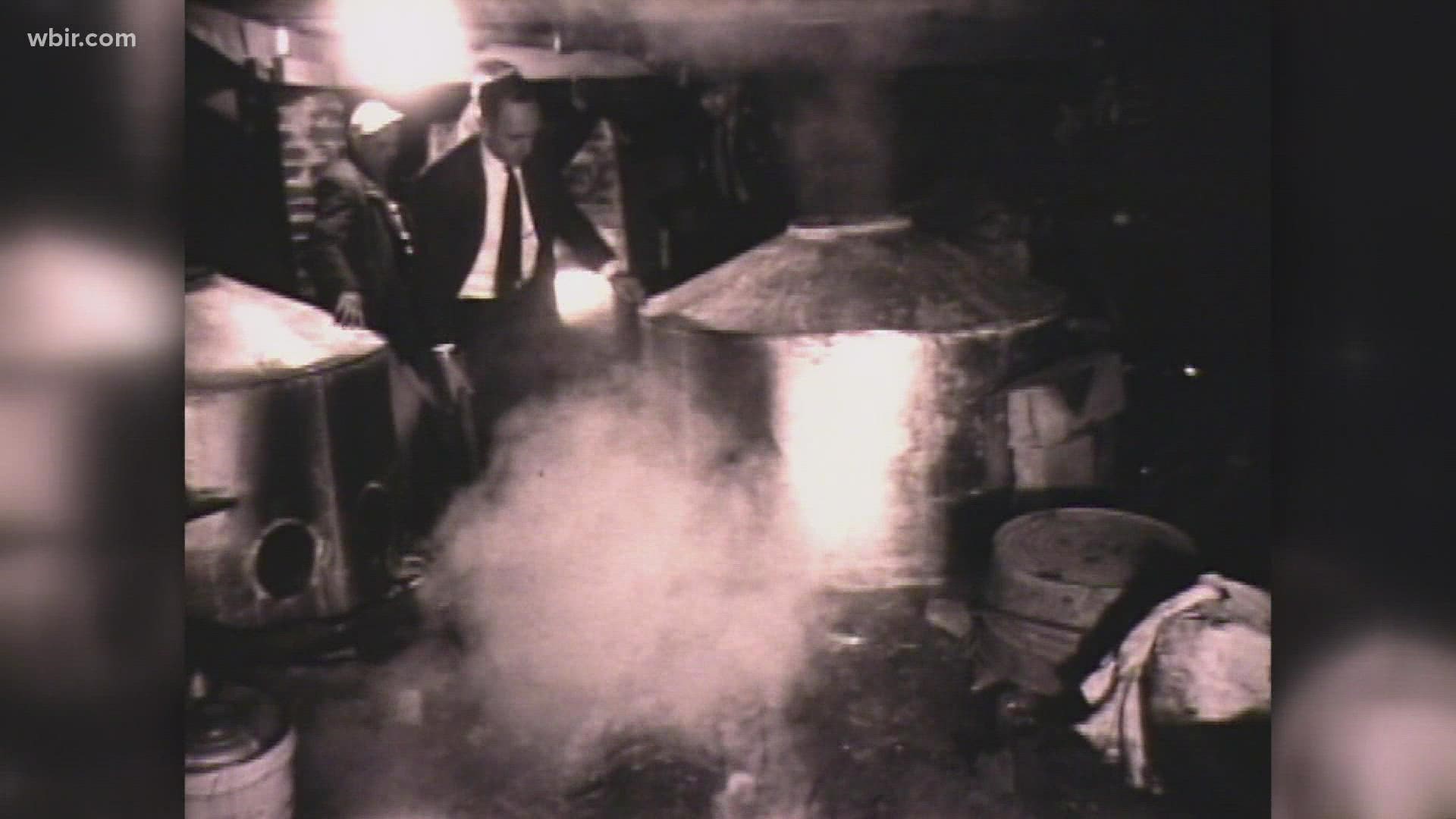KNOXVILLE, Tenn. — Thursday is a special day for many parts of East Tennessee — National Moonshine Day.
The day celebrates the long and complex history of the region's iconic, fiery liquor. Moonshine has its roots deep in U.S. culture, dating back to the late 1700s when it was first referred to as "moonshine" in the "Dictionary of the Vulgar Tongue."
Some historians said the term came as a result of most of the distilling happening at night, so others would not see smoke from the still and moonshiners could stay hidden from neighbors and police.
The first spike in popularity for moonshine happened soon after the Revolutionary War, during Daniel Shays' "Whiskey Rebellion." People turned to the drink as the new government tried to tax whiskey.
Moonshining eventually became a strong part of Southern Appalachian culture, generating modest income for families in the area. It was one of the few ways they could earn money from a subsistence mountain economy, according to Appalachian State University.
They also said since most of the people in the area were Scotch and Irish, they carried homebrewing traditions into the U.S., since it was easier to haul moonshine to markets than large bags of corn.
Competition from legal distilleries and a movement away from an agriculture economy helped push moonshine out of popularity for a little while, but it remained a part of rural Appalachia for years to come. Even when The Confederacy tried to clamp down on moonshining after passing laws prohibiting the use of grains for anything but food, moonshiners persevered.
After the Civil War, there was a tax on home distilleries. However, many families in Appalachia continued brewing and ignored the law, which was easy enough in the chaotic postbellum period of the U.S.
But as more people were arrested over time, moonshiner clans emerged that started to gain influence over entire counties. Many sold rival moonshiners out to law enforcement agencies as they built more modern distilling infrastructure in the Appalachians.
Then came Prohibition in the 1920s, which made illegal brewing both profitable and popular. Moonshine from the area would often be loaded onto trucks in the middle of the night and hauled to big cities, like Chicago or New York.
And when Prohibition ended and the Great Depression began, moonshining continued to be a way for families to make money. It became a common way for Appalachian families to put food on the table and keep a roof over their heads.
After the Great Depression, moonshining started to slow and when the price of sugar tripled in the 1950s, some brands stopped being produced. Some moonshiners started merging marijuana trades with moonshining trades, growing marijuana near their distilleries deep in the mountains, where nobody would find them.
And now, legal distilleries have popped up across East Tennessee. Counties celebrate the legacies of notorious moonshiners, like Popcorn Sutton. And anyone who wants to try the modern iteration of moonshine can simply pick a jar up from their local liquor store.

